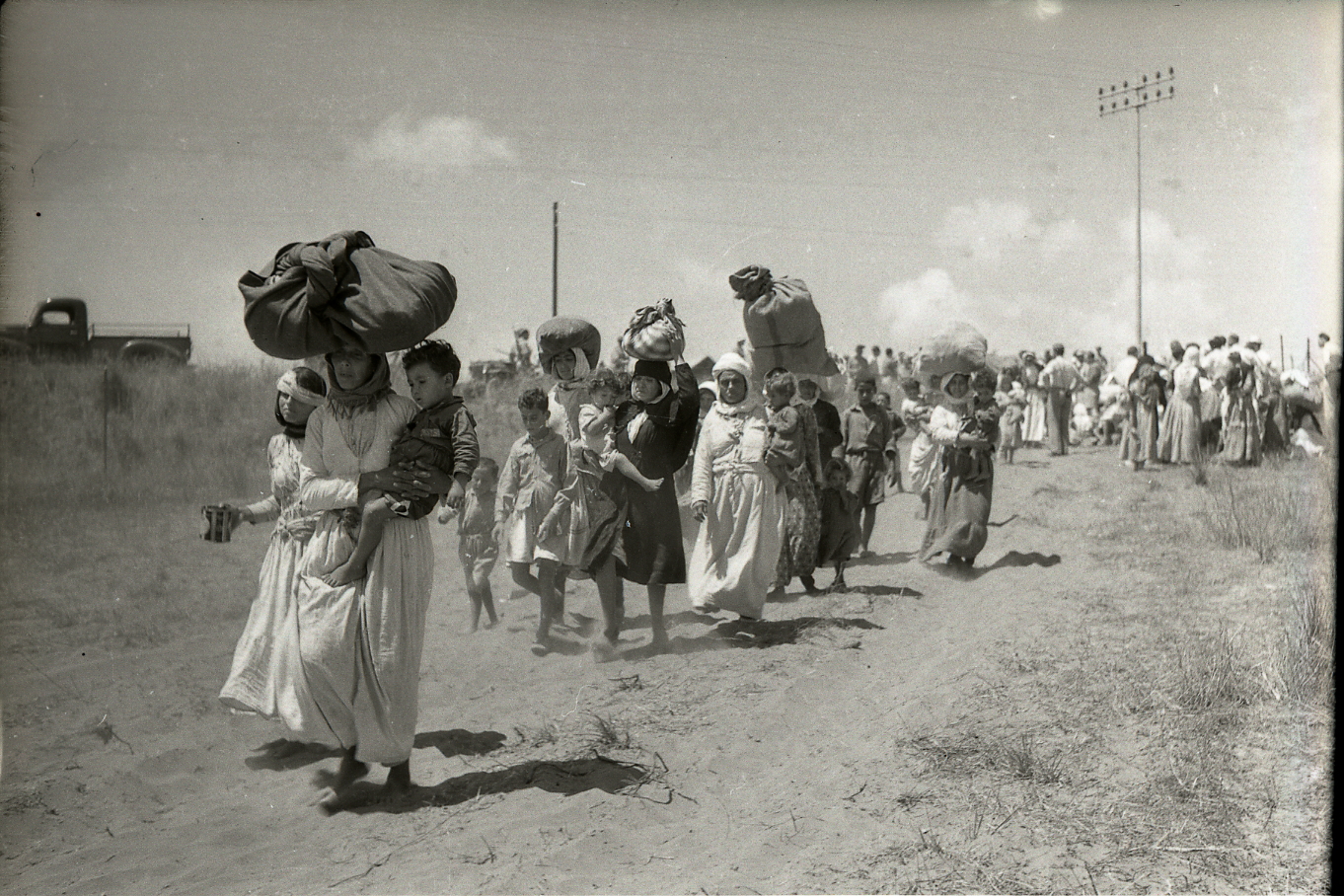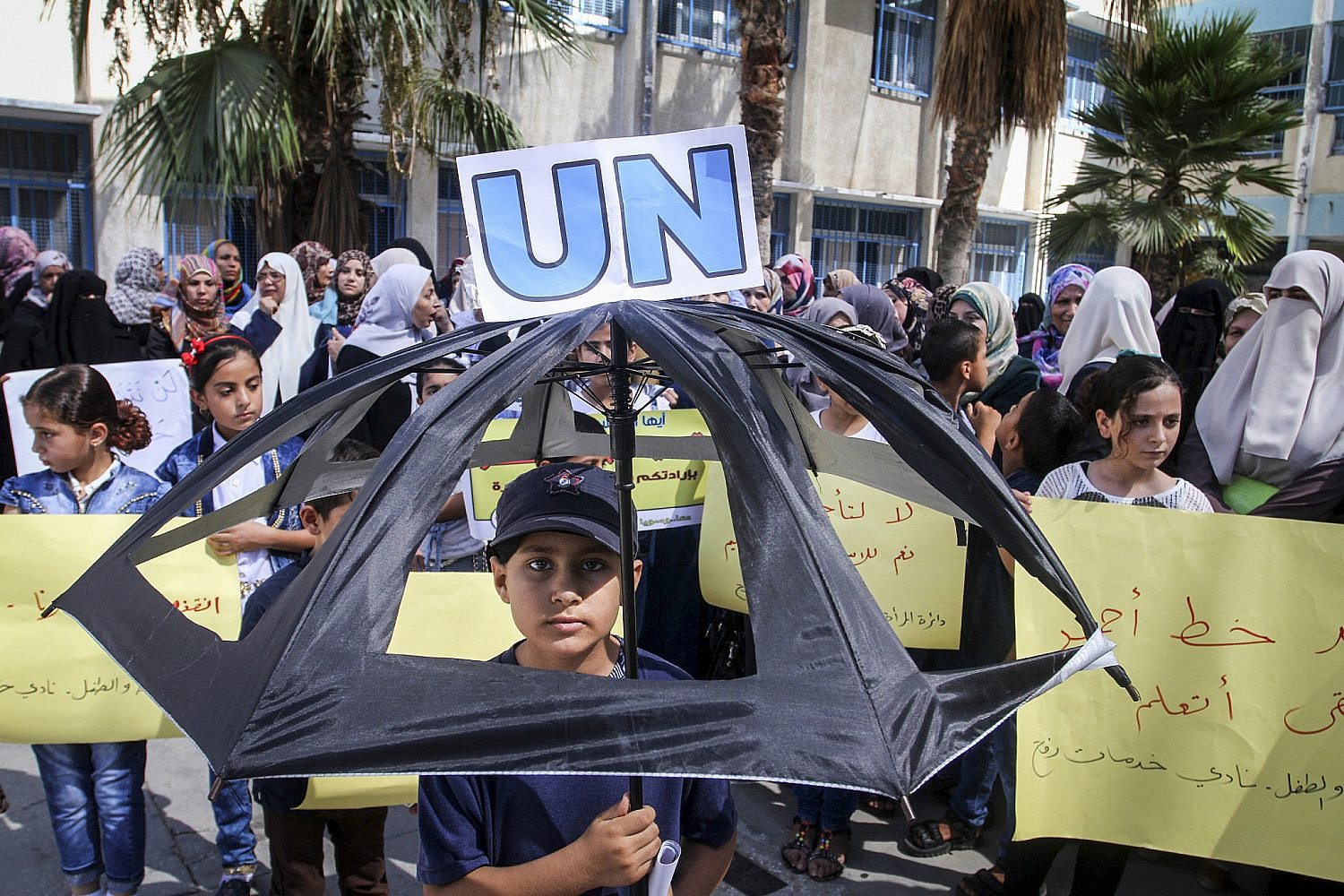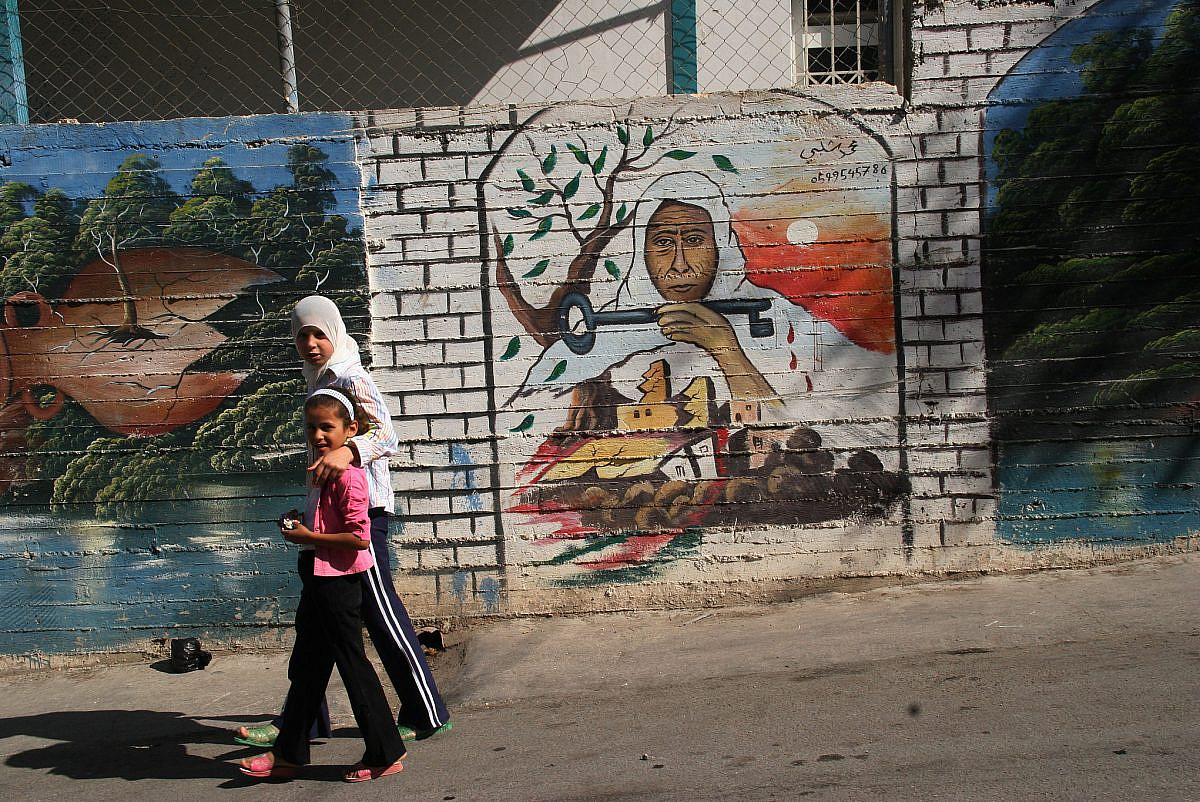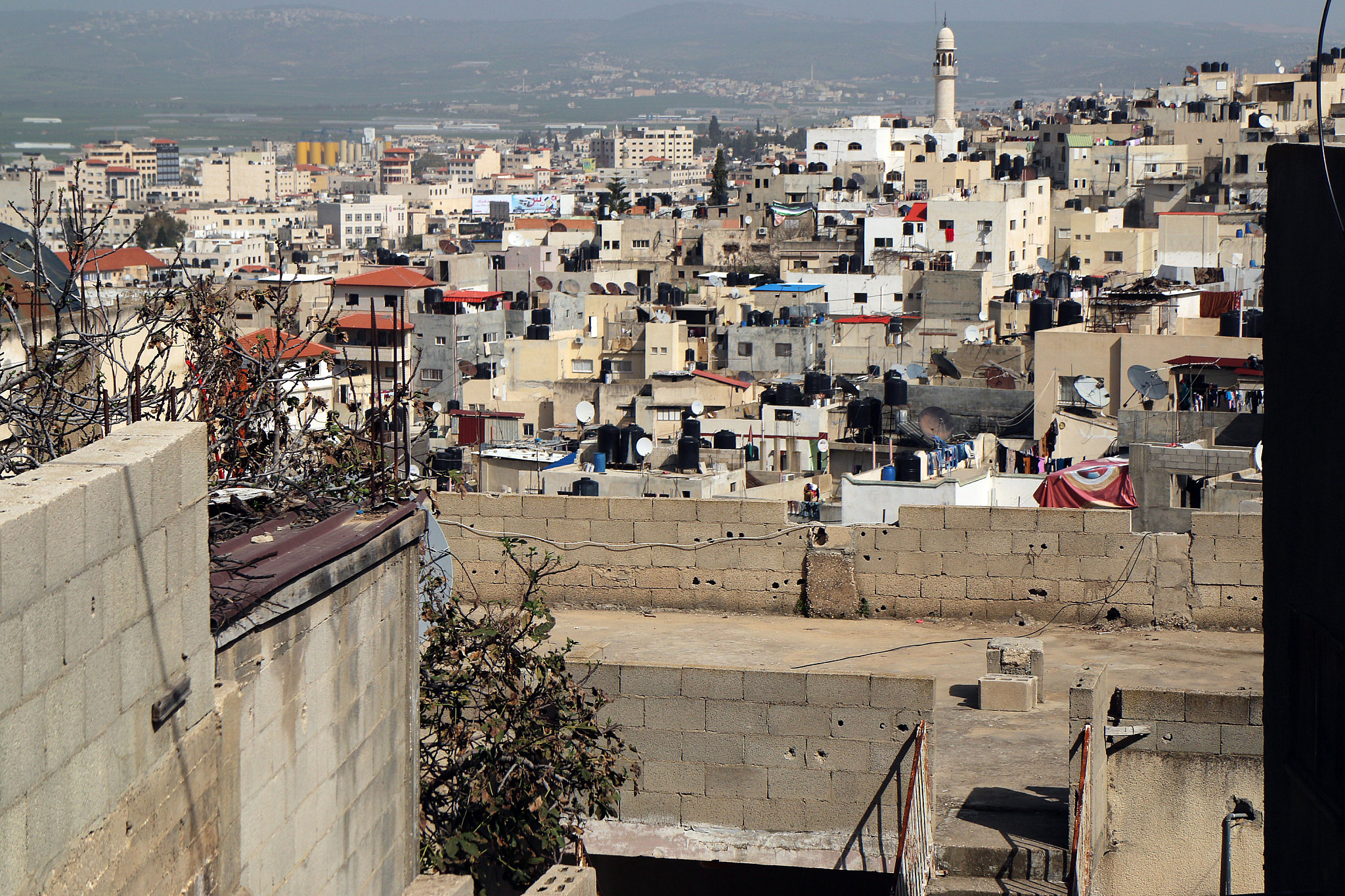The Israeli army’s latest invasion and bombardment of Jenin refugee camp was accompanied by typical hasbara — Israeli propaganda — seeking to justify the illegal occupation as a necessary response to terrorism. It has also sparked another round of bad-faith arguments about the Jenin camp’s very existence, with a spike in social media rhetoric asking why there are refugee camps in the occupied West Bank.
While Palestinian refugees have long been the target of such misinformation campaigns, these hasbara efforts have escalated in recent years with the rise of the extremist right in Israel and an anti-Palestinian drive from Republicans in the United States.
The undermining of Palestinians’ refugee status and rights goes hand-in-hand with the denial of the Nakba (“catastrophe”), the uprooting and expulsion of around three-quarters of the Palestinian population in 1948, at the hands of Zionist militias and the new Israeli state. Denying the Nakba makes it possible to depict Israel’s establishment as liberatory and benign, while propagating myths about Palestinian refugees enables Israeli settler colonialism to continue today.
Yet even a quick fact check reveals this misinformation for what it is. Here, then, is the truth about five of the most prolific myths out there, including about the Palestinians of Jenin refugee camp.
MYTH #1: Palestinians left in 1948 because Arab leaders told them to
The foundational Israeli myth about Palestinian refugees is also the most pernicious. From the outset, Israeli leaders have contended that the Palestinians’ mass flight in 1948 was caused by broadcasted evacuation orders from the Arab regimes at war with the new state.

The motivation for spreading this myth is clear: if the Palestinians’ mass flight was a response to Arab regimes’ orders, Israel avoids culpability for the forced displacement of 750,000 people and their descendants. Moreover, in speaking euphemistically of Palestinians “leaving,” the myth de-emphasizes the forced nature of their migration.
Golda Meir, an early Zionist leader who served as Israeli prime minister for five years, was one of the most influential advocates of this myth. She famously told a British journalist in 1969, “It was not as though there was a Palestinian people in Palestine considering itself as a Palestinian people and we came and threw them out.” In so doing, she denied both the Nakba and the Palestinians’ national identity and political rights. In a sign of the myth’s continuing potency, the same line was propagated earlier this year by Israeli Finance Minister Bezalel Smotrich, saying: “There is no such thing as a Palestinian nation. There is no Palestinian history. There is no Palestinian language.”
Yet the evidence clearly belies it. Over the last 75 years, research by countless historians — not to mention the testimonies of refugees themselves — has consistently shown that Palestinians “left” their homeland because they were expelled by Zionist militias and later the Israeli army. Historians have also uncovered substantial documentary evidence verifying that the large-scale “transfer” of the Palestinian population was carefully planned by the Zionist movement and the nascent Israeli state.
By contrast, no evidence has ever been found of the Arab leaders’ alleged evacuation broadcasts in 1948. Those refugees who were not directly expelled fled in order to escape the violence, especially after hearing of massacres happening nearby — in other words, as the indirect but no-less-intended result of Zionist militancy.

Even the lowest estimates find that Zionist-Israeli forces carried out at least 20 village massacres in 1948, with the biggest taking place at Lydd, Saliha, and most infamously Deir Yassin. To this day, historians and other researchers continue to discover further evidence backing Palestinian testimonies of massacres and mass violence, such as at Tantura, that accompanied Israel’s establishment and forced Palestinians to become refugees.
MYTH #2: Palestinians are the only group to pass on refugee status to their children
One of the most prolific hasbara myths is that Palestinian refugee numbers are falsely inflated because they include the generations born in exile, who critics allege are not “real” refugees. In fact, derivative refugee status is standard policy across the UN refugee regime.
The UN High Commissioner for Refugees states that “if the head of a family meets the [refugee] criteria … his dependants are normally granted refugee status according to the principle of family unity… the principle of family unity operates in favour of dependants and not against them … [and] does not only operate where all family members become refugees at the same time.”
In other words, as long as a group’s displacement remains unresolved, refugee status extends to all those experiencing it, regardless of when and where they were born. The alternative would mean that a Syrian baby born in a camp in Jordan, for example, would be ineligible for essential relief services from the UN refugee agency.
What’s more, protracted refugee crises are the norm rather than the exception. The UN currently estimates that 78 percent of all refugees worldwide are living in a protracted displacement situation.
It is true that the Palestinians are experiencing the longest-running refugee crisis, having lived in exile for 75 years, but many other cases of displacement have also lasted decades. For example, there has been a sizable Burundian refugee population in Tanzania for 50 years, while elsewhere populations of Vietnamese, Afghan, Somali, and Iraqi refugees have all lived in continuous exile for more than 40 years. The reality, then, is that the Palestinian refugee case is unusual without being exceptional.
MYTH #3: UNRWA gives Palestinians an unfair advantage over other refugees
Palestinian refugees are distinctive in that they receive services from a particular UN body, the Relief and Works Agency (UNRWA), rather than the UN High Commissioner for Refugees (UNHCR). According to critics, this set-up gives the Palestinians an unfair advantage by singling them out for special attention.
The Trump administration even defunded UNRWA in 2018 on the grounds that its work “perpetuates” the Palestinian refugee crisis. Citing similar grounds, Israeli Prime Minister Benjamin Netanyahu tweeted in 2017 that the agency should be disbanded and merged into UNHCR. Anti-Palestinian voices have continually alleged that UNRWA’s mandate unjustly advantages the Palestinians in comparison to all other refugees.
In fact, the opposite is true. While UNRWA is distinct from UNHCR, the differences actually disadvantage Palestinian refugees. UNRWA has a much narrower mandate than UNHCR, with no allowance for protection activities. The result is a “protection gap,” whereby Palestinians are the only refugees in the world unprotected by an international body.

What’s more, UNRWA’s mandate is limited to service provision, while UNHCR is mandated to pursue solutions to refugee crises — and the UNHCR’s preferred solution is, in fact, refugee return. Were Netanyahu to get his wish and see the Palestinian refugees subsumed under UNHCR’s mandate, he might get more than he bargained for.
MYTH #4: Palestinians have no right of return under international law
At the end of 1948, the UN adopted Resolution 194 on Palestine, which proclaimed that “refugees wishing to return to their homes and live at peace with their neighbours should be permitted to do so at the earliest practicable date.” The resolution was passed by 35-15 votes, but has never been implemented.
Opponents of Palestinian return argue that the resolution is ultimately irrelevant because it came from the UN General Assembly, which only issues recommendations and not binding resolutions. But such an argument is tenuous, because the Palestinians’ right of return has a broad legal basis that is not limited to Resolution 194. Other international instruments that affirm the right of return include the Universal Declaration of Human Rights, the Hague Conventions, and the Geneva Conventions. And as noted above, return is also the preferred resolution under the UN refugee regime in general.
As for claims that Palestinian refugee return is simply not feasible for the modern Israeli state, it is worth remembering that Israel fervently welcomes mass immigration under its policy of automatically offering citizenship to Jewish immigrants — which is explicitly termed the “Law of Return.” Over the years, Israel has absorbed large-scale incoming Jewish populations from North Africa, the Middle East, Ethiopia, and the former Soviet Union, and has claimed great success in doing so. This reality is incompatible with claims that Palestinian return is “unfeasible.”
MYTH #5: The Nakba ended in 1948
Admittedly, this is not a myth propagated by the usual anti-Palestinian voices, who tend to deny that the Nakba happened at all. However, what is important to flag is not only that the Nakba happened, but that it is still happening. Settler colonialism is a structure, not an event, and the history of the Zionist movement bears this out.
Most read on +972
Palestinians speak of the ongoing Nakba to encapsulate Israel’s continuing dispossession and displacement of the indigenous population after 1948. This is done by way of forcible evictions, land grab, house demolitions, denial of residency rights, and discriminatory planning and zoning. While most notable in the occupied West Bank and Gaza Strip, such moves are also conducted against ’48 Palestinians (citizens) inside Israel.
Unfortunately, the Nakba is ongoing even this past week, with the Israeli army’s aforementioned attack on Jenin. The offensive compelled as many as 4,000 Palestinians to flee the camp, making them twice- or even thrice-refugees — with no sign of their displacement being resolved any time soon.





